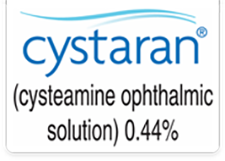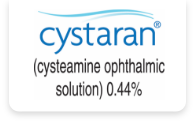
Privacy Policy

Privacy Policy

Privacy Policy
Privacy Policy
Leadiant Biosciences, Inc. (“Leadiant”) holds the highest respect for its customers and guarantees our firm commitment to your privacy. We do not sell any of the information provided by you to any other institutions.
IMPORTANT SAFETY INFORMATION
What is CYSTARAN?
CYSTARAN (cysteamine ophthalmic solution) 0.44% is an eyedrop medication used to treat cystine crystal accumulation in the corneas of patients who have cystinosis.
What is the most important safety information I should know about CYSTARAN?
- To help prevent contamination of the dropper tip and eyedrop medication, try to make sure that CYSTARAN is dropped directly onto the eye without touching it. Try not to touch the eyelids or surrounding areas with the dropper tip of the bottle when you are using CYSTARAN. Keep the bottle tightly closed when not in use.
- CYSTARAN contains an ingredient called benzalkonium chloride which can be absorbed by soft contact lenses. Remove contact lenses before using CYSTARAN eyedrops and wait at least 15 minutes before reinserting them.
- CYSTARAN should only be used as an eyedrop medication.
What are the side effects of CYSTARAN?
- The most common side effects of CYSTARAN, which have occurred in at least 10% of people using the medication, were sensitivity to light, eye redness, eye pain and irritation, and headache.
The risk information provided here is not comprehensive. To learn more, talk to your healthcare provider or pharmacist about CYSTARAN. The full FDA-approved product labeling can be found at www.cystaran.com.
You are encouraged to report negative side effects of prescription drugs to the FDA. Visit www.fda.gov/medwatch or call FDA at 1-800-FDA-1088.



